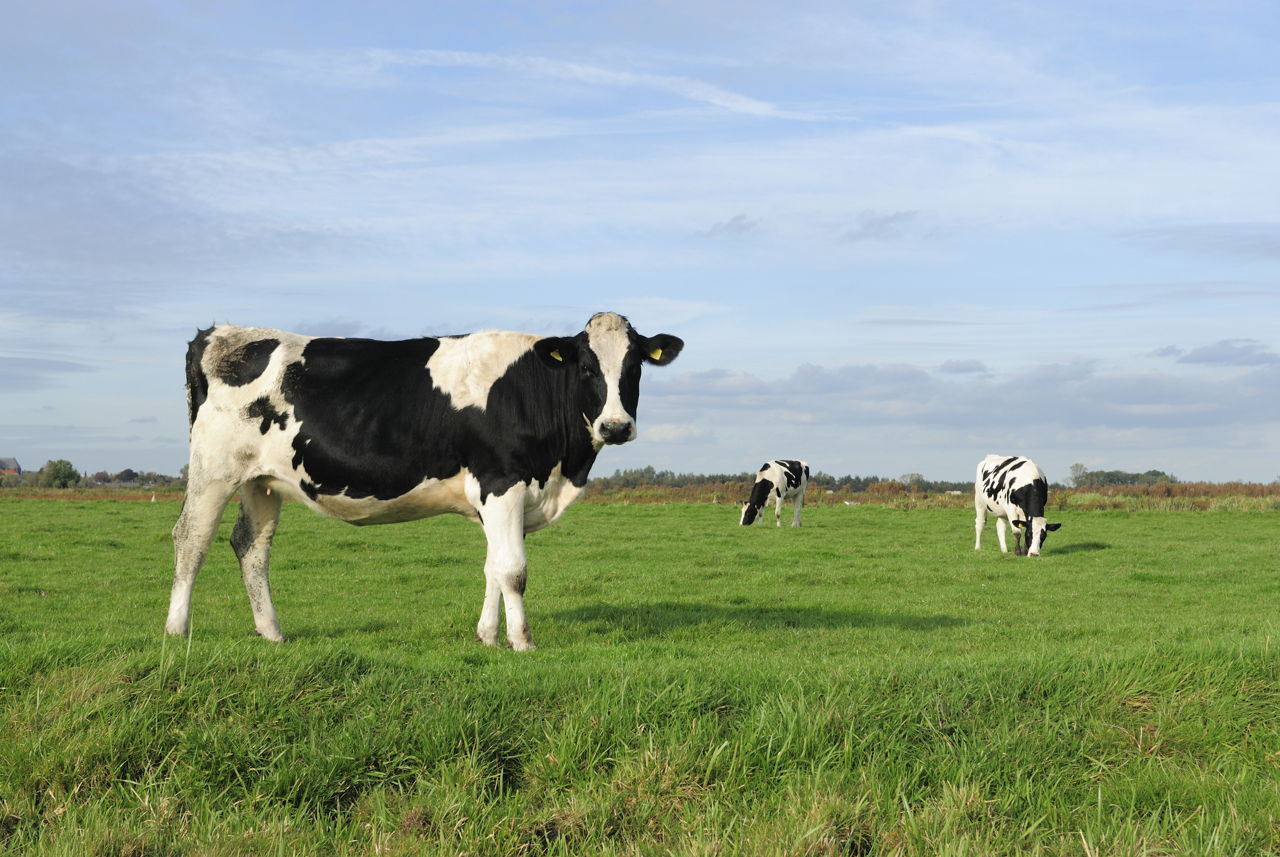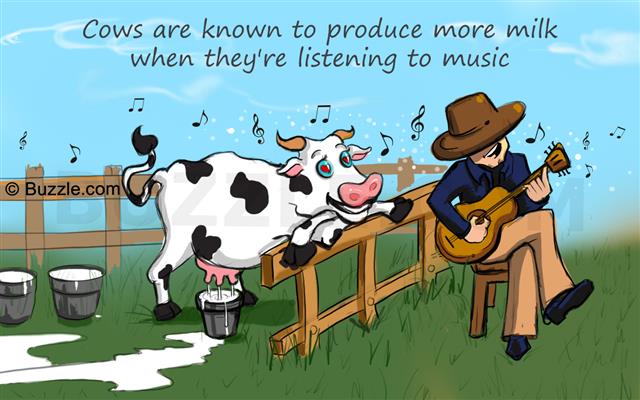
The different breeds of cows are mainly classified as taurine, zebu and hybrids. A short account of various cow breeds is presented in this article.
Cow is a widely domesticated animal the world over. The word cattle is generally used when referring to cows. Cows along with goats are mostly used for dairy products. There are 800 breeds of cattle worldwide and their approximate population is 1.3 billion. It is also the first livestock animal whose genome has been mapped.
Different Cow Breeds
Carolus Linnaeus classified cattle into three species under the genus, Bos; species that come under this genus are Bos indicus (Zebu), Bos taurus (Taurine) and Bos primigenius. Creation of hybrids by crossing the zebu and taurine species is possible. These cattle species have also been crossed with bison and yaks. Attempts to cross them with buffaloes however, has not attained success. Now, let us have a look at different breeds of cows through this article.
Ayrshires
The Ayreshire cows have shades of white and red. Their origin can be traced back to Ayrshire county in Scotland. Some of the Ayrshires also possess roan and brindle colors. Average weight of an adult Ayrshire cow is 100-1300 pounds. These cows are suited for dairy purposes due to their ability to efficiently convert grass into milk. They are physically strong and easy to raise. Average milk production of Ayrshire cows as recorded in ABA programs (2002) is 17,230 pounds. Fat and protein extracts obtained from Ayrshire cows are 665 and 542 pounds respectively. Ayrshire cows are better in udder conformation than other breeds; these cows are less likely to suffer from leg and foot problems.
Guernsey
The Guernsey cows are mainly observed in shades of white or fawn; sometimes you see both colors in patches. Milk of Guernseys is known for their rich quality. Beta carotene present in the body of Guernsey cows gives their milk slightly golden in appearance. These cows are docile and hardy. The annual average milk production of Guernsey cows is 16,200 pounds. Proteins & fat percentage of milk is 3.2 and 4.5 respectively. Weight of an adult Guernsey cow is about 1000 pounds. Farmers prefer this cow over other breeds for qualities like high efficiency of milk production, longevity and lesser problems associated with calving. Calm nature of Guernsey cows can be handled quite easily in a dairy farm.
Holstein
This breed originated in what is today’s Netherlands. The Holstein breed evolved mostly in the region present on either side of ‘Zuiderzee’ (bay to the northwest of Netherlands in the North Sea). Import of Holstein breeds to the USA took place in the latter half of the nineteenth century. The skin coat of Holstein cows is marked with white and black patches. This cow breed is known for high milk efficiency.
Jersey
It is named after the island where it originated; the island of Jersey is the biggest in the British Channel. This cow breed is one of the smallest with a reddish body color. Weight of adult jersey cows range from 800-1200 pounds. High butterfat is the specialty of milk produced by this cow. Jersey cows are docile and also adaptable to hot climatic conditions. These breeds have the hardiness to survive in the hottest regions of Brazil.
List of Cow Breeds
Cows are primarily classified into Taurine, Zebu and miniature breeds. Different breeds from these categories are listed in the tables below.
Taurine Cattle
| Abigar | Agerolese | Alderney |
| Angeln | Aulie-Ata | Australian Friesian Sahiwal |
| Belgian Red Cattle | Blaarkop | Burlina |
| Chinese black pied | Danish Jersey | Danish Red and variants |
| Dutch Belted | East Anatolian Red | Evolene Cattle |
| German Black Pied Cattle | Groningen | Red Holstein |
| Icelandic | Illawarra Cattle | Israeli Holstein |
| Kerry Cattle | Lineback | Milking Shorthorn |
| Murnau-Werdenfels Cattle | Northern Shorthorn | Swedish Freisan |
| Swedish Red Cattle | Ringamala Cattle | Tux Cattle |
| Abondance | Adamawa | Ala Tau |
| Albanian | Allmogekor | American White Park |
| Anatolian Black | Angeln Cattle | Angus Cattle |
| Argentine Criollo | Armorican | Arouquesa Cattle |
| Asturian Mountain | Asturian Valley | Aubrac Cattle |
| Aulie-Atta | Aure et Saint-Girons | Avilena |
| Balancer Cattle | Barrosa Cattle | Beef Freisan |
| Belgian Blue | Belgian Red | Berrenda |
| Betizu | Blonde d’Aquitaine | Blanca Cacerena |
| Braunvieh | British Friesian | British White |
| Bue Lingo | Busa Cattle | Cachena |
| Caldelana | Camargue | Canadienne |
| Canaria | Cardena andaluza | Carinthian Blondvieh |
| Carora | Chianina | Charolais |
| Corriente Cattle | Danish Red | Devon |
| Dexter | Dolafe | Dulong’ |
| Dutch Belted | Dutch Friesian | Eastern Finncattle |
| English Longhorn | Ennstal Mountain Pied Cattle | Fighting bull |
| Finnish Cattle | Fjall Cattle | Fleckvieh |
| French Simmental | Galician Blond | Galloway Cattle |
| Gascon Cattle | Gelbvieh | Georgian mountain Cattle |
| German Red Pied | Glan Cattle | Gloucester |
| Greek Shorthorn | Harton del Valle | Harz Red mountain Cattle |
| Herens | Highland Cattle | Hinterwald Cattle |
| Holando-Argentino | Hungarian Grey | Irish Moiled |
| Istoben Cattle | Jutland Cattle | Kalmyk |
| Kazakh Whiteheaded | Kerry Cattle | Kholmogory |
| Kostroma Cattle | Kurgan | Latvian Brown |
| Levantina | Limiana | Limousin |
| Lithunian Red | Lourdais | Maine Anjou |
| Mantequera Leonesa | Maremmana | Maronesa |
| Mashona | Marchigiana | Menorquina |
| Meuse-Rhine-Issel | Milking Devon | Milking Shorthorn |
| Mirandesa Cattle | Monchina | Mongolian Cattle |
| Montbeliard Cattle | Morucha | Murboden Cattle |
| N’Dama | Negra Andaluza | Normande Cattle |
| Northern Finncattle | Norwegian Red | Pajuna |
| Palmera | Parda Alpina | Parthenais |
| Pasiega | Pembroke Cattle | Philippine Native Cattle |
| Pie Rouge des Plaines | Piedmontese | Pineywoods |
| Pinzgauer | Pirenaica | Polish Red Cattle |
| Qinchaun | Ramo Grande | Randall |
| Ratische Grauvieh | Red Poll | Red Polled Ostland |
| Red Angus | Reina | Retinta |
| Romagnola cattle | Russian Black Pied | Yanbian Cattle |
| Salers | Shetland Cattle | Shorthorn |
| Simmental | South Devon | Swedish Red-and-White |
| Swedish Red Poll | Tarentaise | Telemark Cattle |
| Texas Longhorn | Toro de Lidia | Tswana Cattle |
| Tudanca | Tuli Cattle | Turkish Grey Steppe Cattle |
| Tyrolese Grey Cattle | Vestland Fjord | Vorderwald Cattle |
| Vosges | Wagyu | Western Finncattle |
| Western Red Polled | White Caceres | White Park |
Zebu
| Achham | Red Sindhi | Butana and Kenana | Gobra |
| Vechoor cow | Sahiwal | Ankole-Watusi | Gir |
| Afrikander | African Boran | Brahman | Fulani Sudanese |
| Dajal | Dhanni | Gudali | Guzerat |
| Halikar | Hariana | Horro | Kangayam |
| Kankrej | Krishna Valley Cattle | Lohani Cattle | Madagascar Zebu |
| Masai Cattle | Nelore Cattle | Ongole Cattle | Rath |
| Rathi | Vianesa | Rohjan | Tharparkar |
Hybrids
| Amerifax | Brahmousin | Estonian Red cattle | Groningen |
| Hybridmaster | Illawara | Israeli Red | Jamaica Black |
| Karan Swiss | Limpurger | Madura Cattle | Nguni |
| Sanhe | Selembu | Siboney | Xingjiang Brown |
| Jamaica Hope | Australian Milking Zebu | – | – |
Miniature Cow Breeds
Nowadays, miniature cow breeds are becoming popular on small farms; these are created by crossing those with strains of Dexter and Zebu. The ‘International Miniature Cattle Breeders Society and Registry’ undertakes the work of recording minituare cattle breeds. Categories of these breeds of small cow registered with this organization are enlisted in the following table.
| American Beltie | Auburnshire | Australian Kyrhet |
| Miniature Angus | Barbee | Belmont |
| Black Baldie | Burienshire | Covingtonshire |
| Dexter | Belted Milking Dexter | Durham/Shorthorn |
| Four Breed Grad-Wohl | Five Breed Grad-Wohl | Happy Mountain |
| Hereford | Highland | Lessor Jersey |
| Belted Lessor Jersey | Kentshire | Red Kentshire |
| Kingshire | Panda | Zebu |
| Texas Longhorn | Open Breeds | – |
The different breeds of cows are a source thar provide us with nutrients in the form of milk. In most the developing countries, old, crippled and diseased cows are sent to slaughter houses as a result of the owner’s inability to care for them. It is necessary to support this harmless and docile creature in their old age so as to preserve cow breeds. It is also a nice way to repay these creatures for their invaluable service to mankind.
